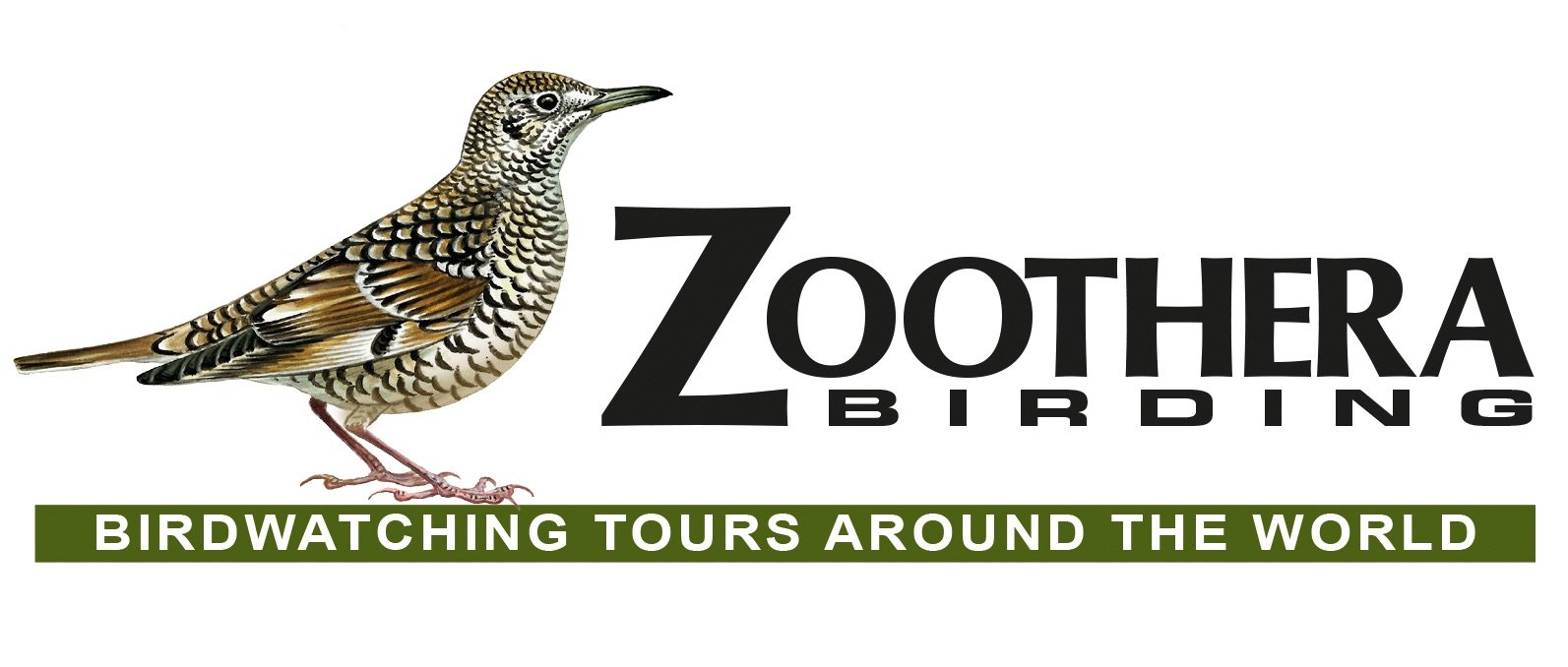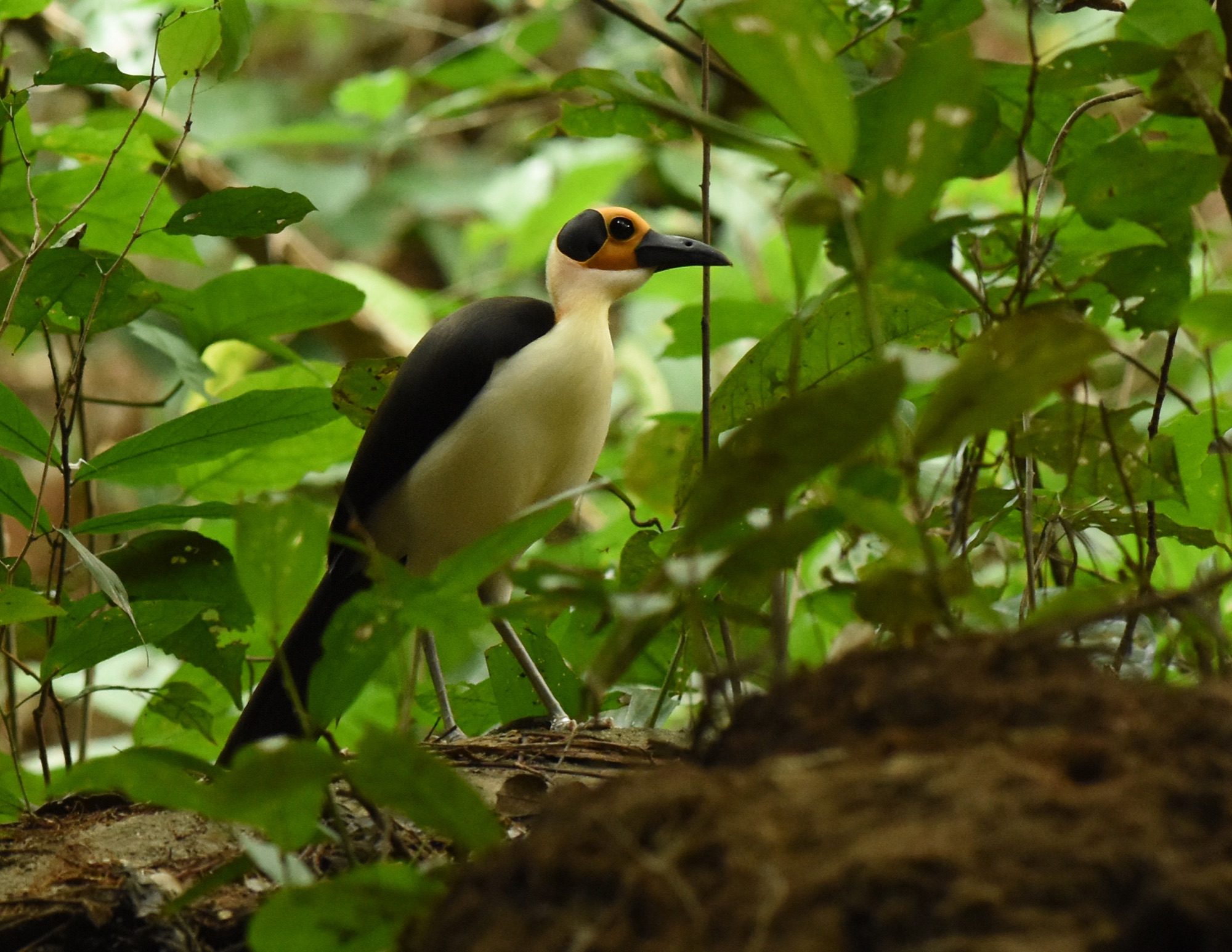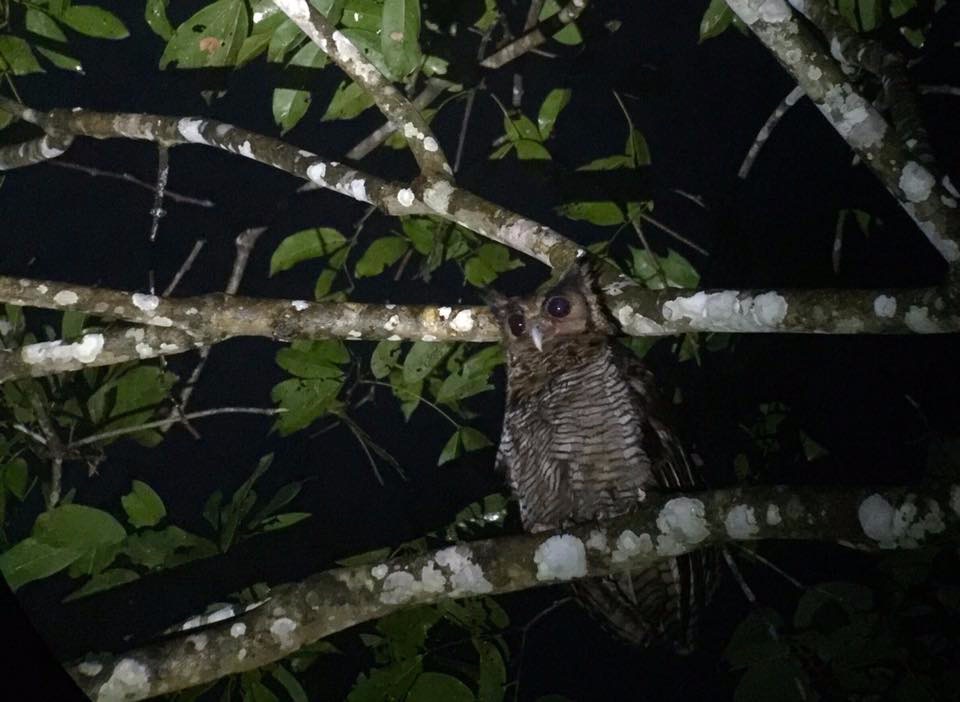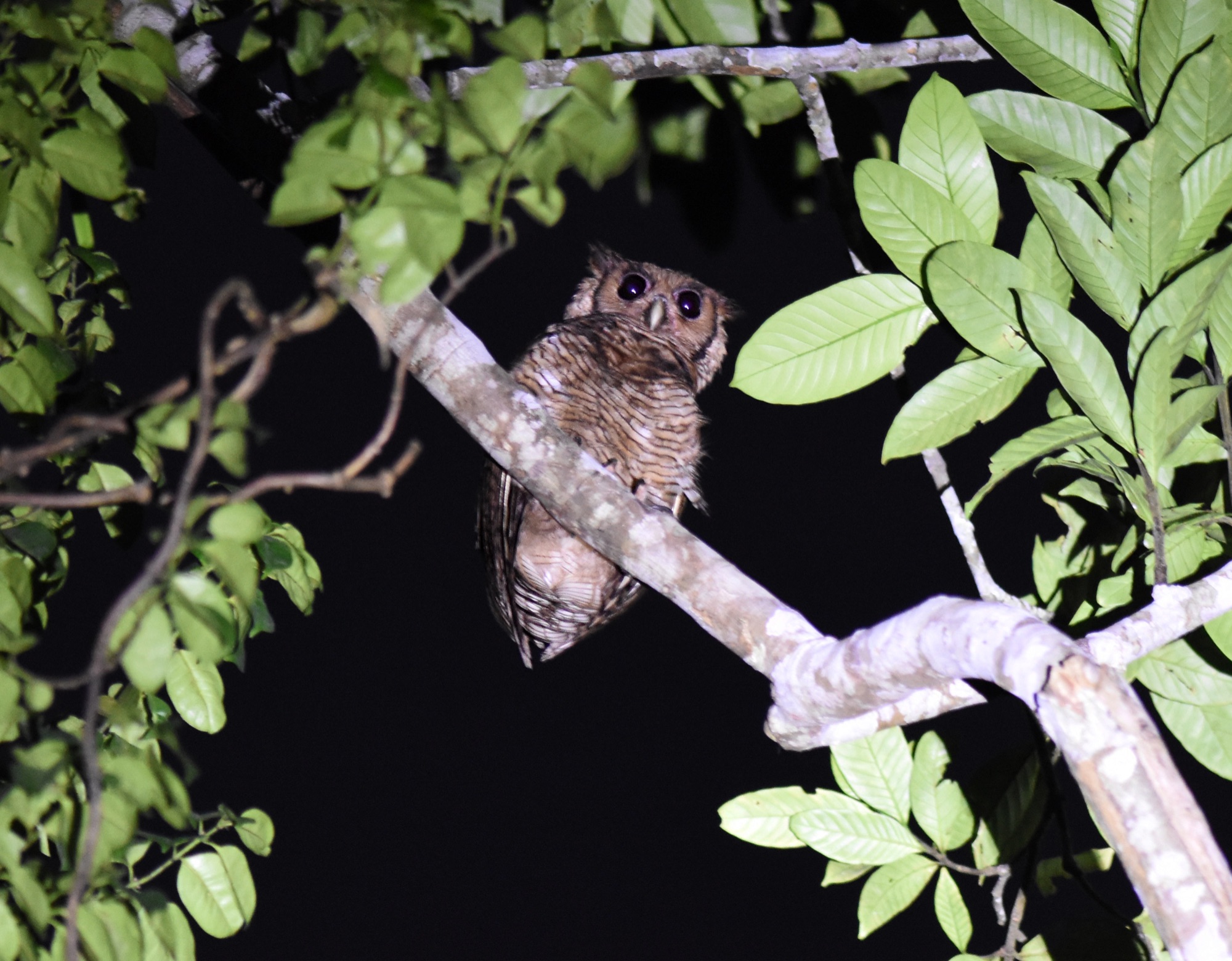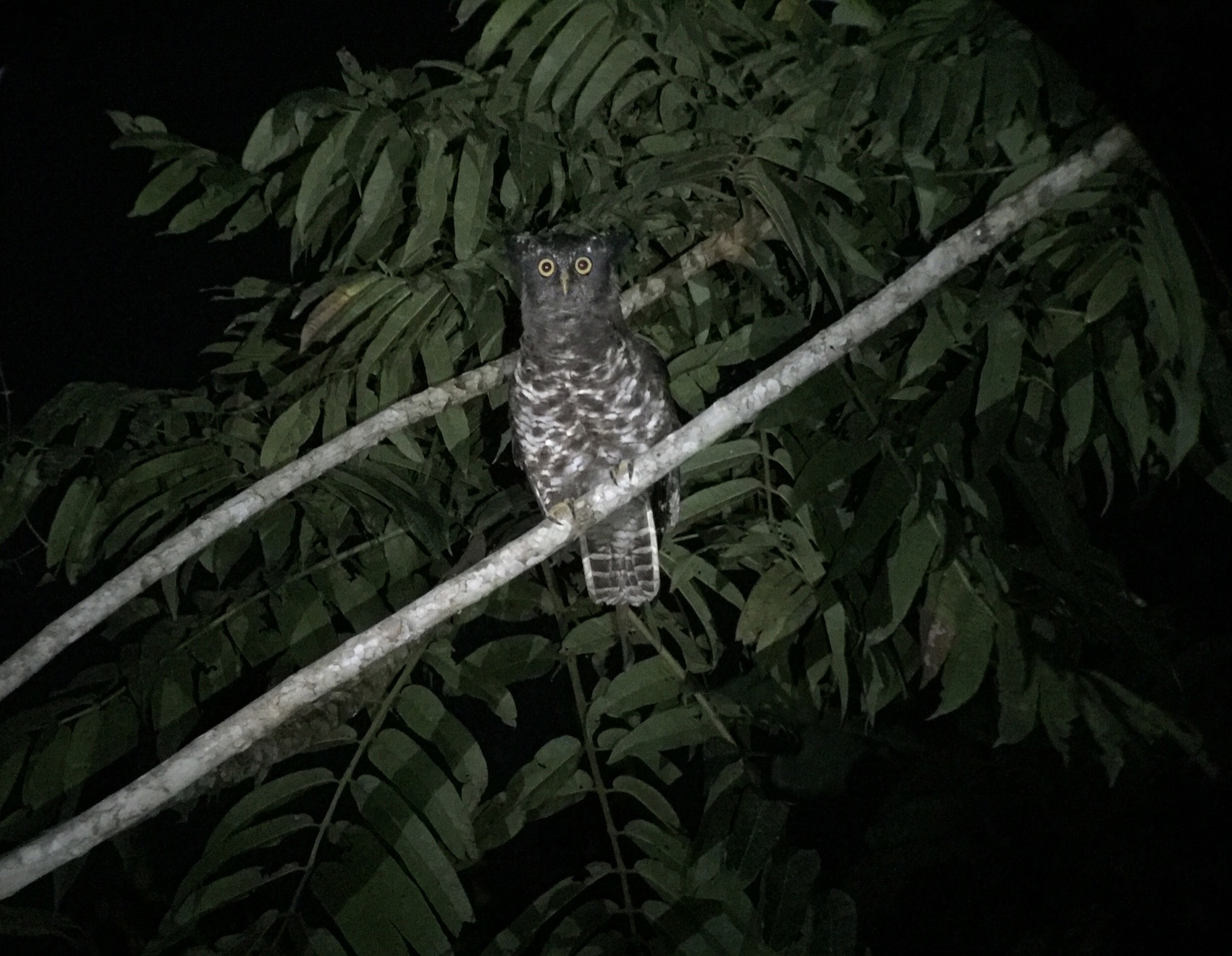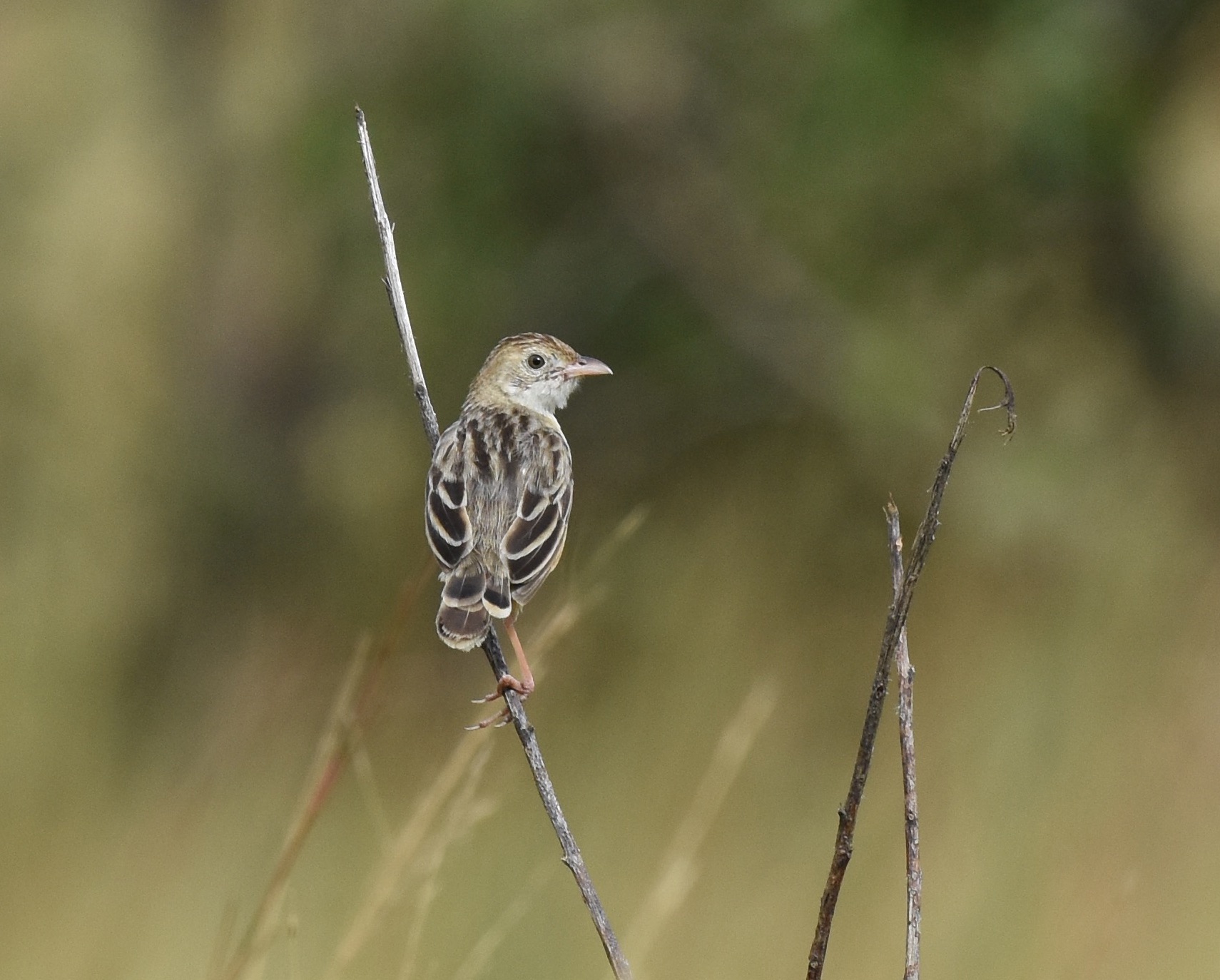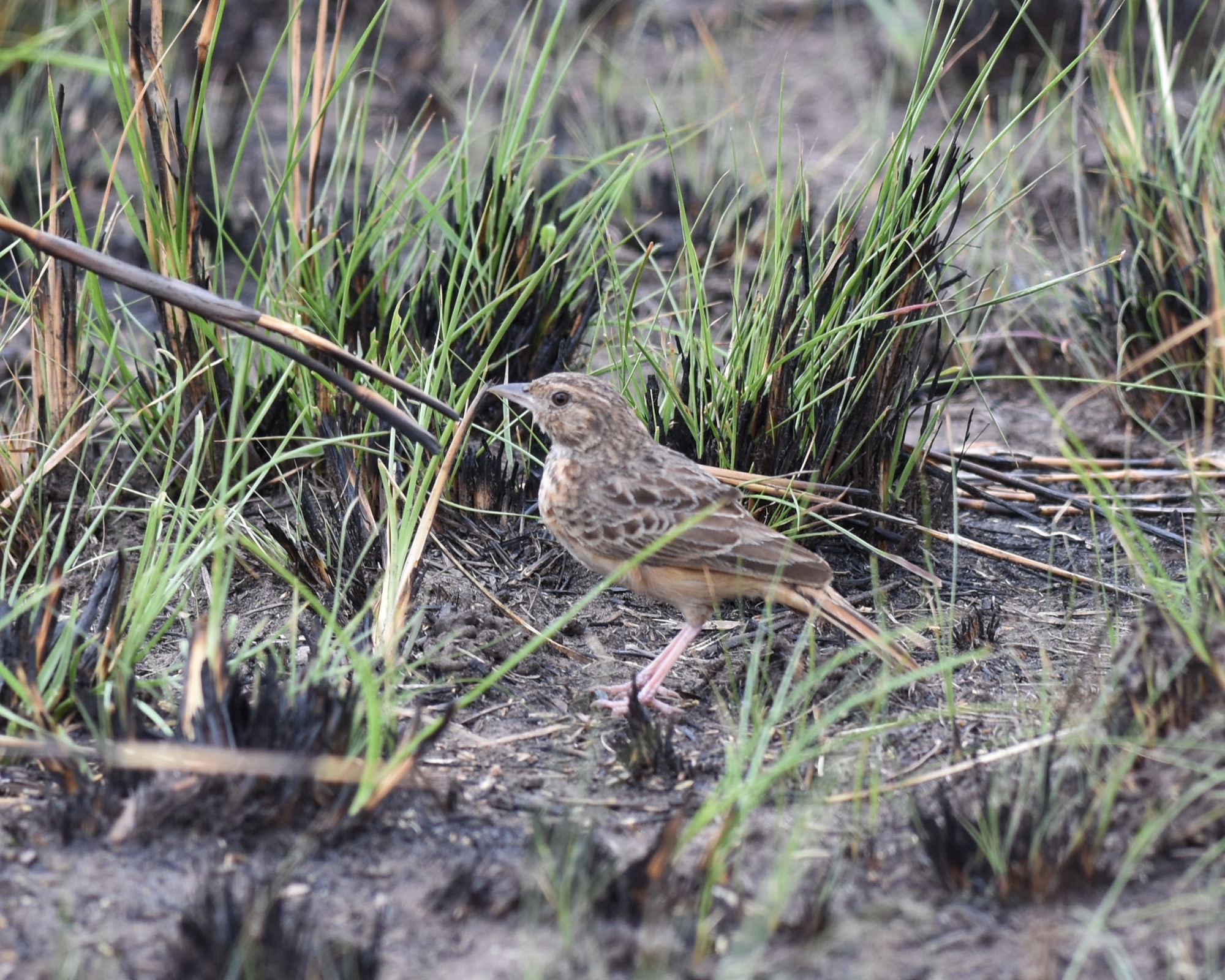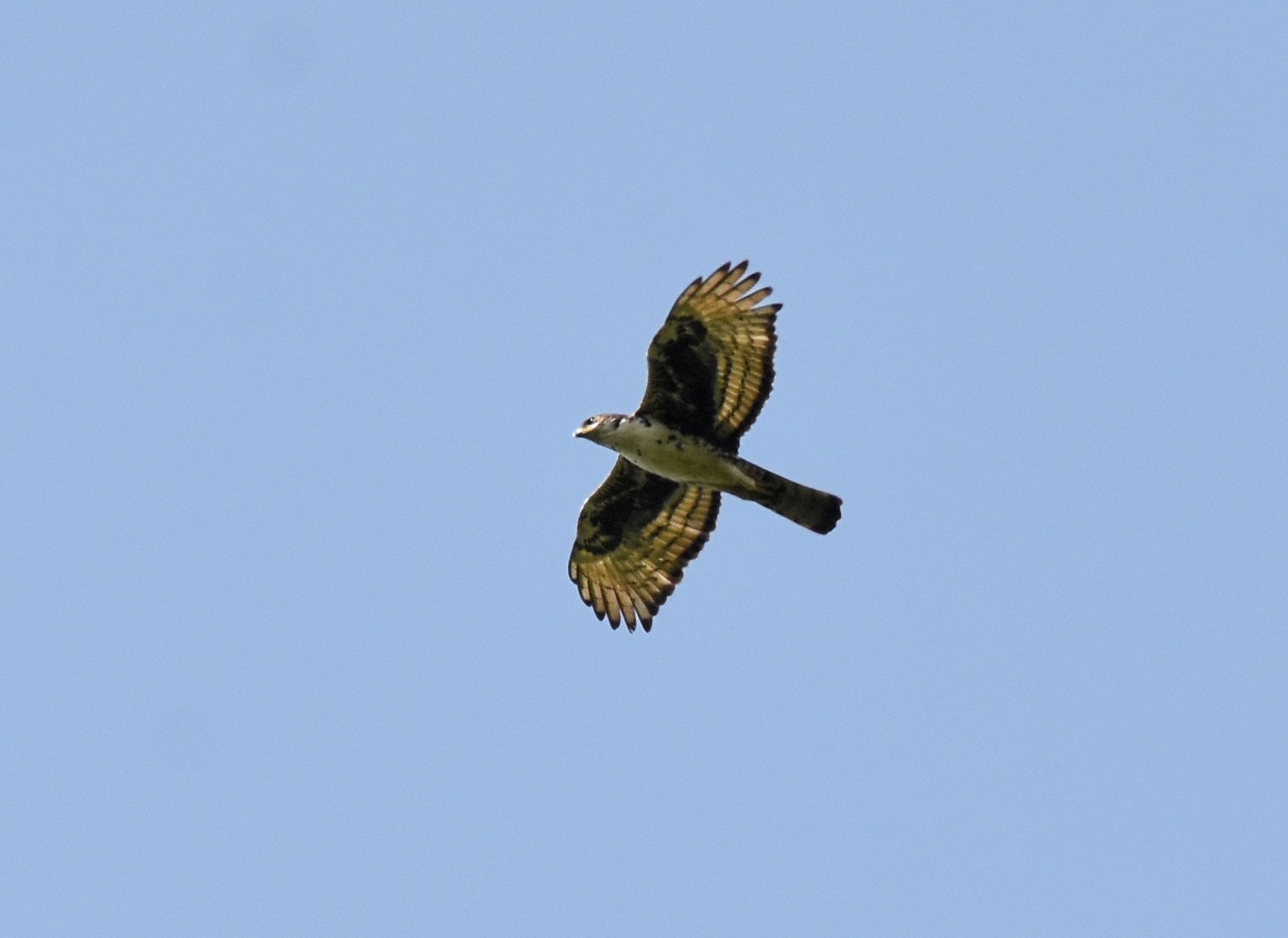Day 1 UK - Accra - 20th October
After a direct international flight from the UK/Europe (only 6 and a half hours) we will arrive at Accra in the evening and transfer to a nearby hotel for the night. Overnight in Accra.
Day 2 Accra - Shai Hills - Kakum NP
Our first full day in Ghana will begin with an early breakfast before setting off to visit the nearby Shai Hills Reserve, an expanse of savannah, grassland and woodland, and provides a perfect introduction to the wealth of birdlife to be found in this 'crown jewel' of west African birding destinations. There is so much to see here but amongst the wealth of possibilities we hope to find Helmeted Guineafowl, Stone Partridge, Double-spurred Francolin, Brown Snake-eagle, Senegal Parrot, Red-headed Lovebird, African Pygmy Kingfisher, Northern Red-billed and African Grey Hornbills, Blue-bellied and Rufous-crowned Rollers, Rosy and Swallow-tailed Bee-eaters, Violet and Green Turacos, White-crowned Cliff-chat, White-crowned Robin-chat, Brown-crowned Tchagra, Senegal Batis, Rock Martin, Northern Puffback, Piapiac, Yellow-crowned Gonolek, Pale and Lead-coloured Flycatchers, White-shouldered Black-tit, Green-headed and Scarlet-chested Sunbirds, Black-faced Quailfinch and if we are lucky, African Barred-owlet amongst other species.
After a productive morning we will return to our hotel and enjoy our lunch before checking out and heading for the nearby Sakumono Lagoon. Here we hope to find Black, Striated and Squacco Herons, Intermediate and Western Reef Egrets, Glossy Ibis, African Spoonbill, Long-tailed Cormorant, Garganey, Black-winged Stilt, Senegal Thick-knee, Spur-winged Lapwing, Collared Pratincole, Kittlitz’s Plover, Malachite and Pied Kingfishers, and a variety of other more familiar western palearctic waders and terns. After some good birding we head west leaving the busy city of Accra behind. Our destination is Cape Coast where the amazing Kakum National Park is located. En route, we will be stopping at a grassland reserve and lagoon where we hope to find both Black-shouldered and Yellow-billed Kites, African Hobby, Grey Kestrel, Lizard Buzzard, African Wattled Lapwing, Blue-spotted Wood-dove, Flappet Lark, Plain-backed Pipit, Yellow-throated Longclaw, Black-crowned Tchagra, Splendid and Copper Sunbirds, Red-winged Prinia, Siffling and Short-winged Cisticolas, Western Grey Plantain-eater, Yellow-mantled Widowbird, Black-necked Weaver, Blue-billed and Bar-breasted Firefinches, and Black-bellied Bustard to mention a few. Around the lagoon, we aim to see Purple Heron, Purple (African) Swamphen and African Pygmy-goose amongst others. Then we will head to the Rainforest Lodge, our base for the next 3 nights whilst we visit Kakum National Park. At the end of the day we can retire to our air-conditioned rooms after our evening meal, checklist and discuss the day’s sightings.
Days 3 - 4 Kakum National Park
After an early breakfast we head for the world famous canopy walkway at Kakum National Park which is approximately a 15 minute drive from our hotel. We aim to get there for first light (as we have special access) enabling us to spend the most critical bird viewing hours 40 meters above the forest floor on the canopy walkway where we can scan with scopes from the excellently positioned viewing platforms. The 360 km2 Kakum National Park protects secondary Upper Guinea tropical rainforest and holds a wealth of very special birds and we hope to see a good selection from our vantage point along the walkway with species such as Brown-necked and Red-fronted Parrots, Black-casqued, Black-and-White-casqued and White-crested Hornbills, Rosy Bee-eater, Little Green, Melancholy and Fire-bellied Woodpeckers, Bristle-nosed, Naked-faced, Yellow-spotted and Hairy-breasted Barbets, Speckled, Red-rumped and Yellow-throated Tinkerbirds, Yellow-billed Turaco, Lemon-bellied Crombec, Sabines Puffback, Sharpes Apalis, the strange Preuss’s Golden-backed Weaver that creeps along branches in a nuthatch-like fashion, Red-headed and Red-vented Malimbes, Buff-throated, Fraser's, Johanna's, Tiny and Little Green Sunbirds, Blue Cuckoo-shrike, Green Hylia, Violet-backed Hyliota, Yellowbill, Little Grey, Usher's and Shrike Flycatchers, Grey-headed, White-breasted and Chestnut-breasted Negrofinches, Black-winged Oriole, Grey Longbill, White-headed and Forest Wood-hoopoes, Blue Cuckoo-shrike, Rufous-crowned Eremomela, Ansorge's, Yellow-whiskered, Honeyguide and Icterine Greenbuls, Velvet-mantled Drongo, and if we are lucky, Black-collard Lovebird and Yellow-footed Honeyguide. Tree platforms provide a fabulous vista over the forest, ideal for raptor watching and we hope to see Red-necked Buzzard, Palm-nut Vulture, African Harrier-hawk, the tricky Congo Serpent-eagle, Red-thighed Sparrowhawk, Long-tailed Hawk and both Ayres’s & Cassin's Hawk-eagles to mention just a few. Mammals are also a key feature of Kakum and it is not unusual to enjoy good views of Lesser Spot-nosed Monkey and Ursine Colobus from the canopy walkway. We can also enjoy a short excursion for the beautiful White-throated Blue Swallow, Rock Pratincole, and White-headed Lapwing before returning to the hotel for our lunch. During the heat of mid-afternoon, you will have the option of birding around the hotel with your guide, resting around the pool and bar or you could choose to go on a cultural excursion to Cape Coast Castle where you will be accompanied by an experienced cultural guides for the one hour tour. In the evening we re-visit the canopy when our main targets will be Brown-cheeked, Black and Yellow-casqued Hornbills, the huge Great Blue Turaco, Brown Nightjar and Fraser’s Eagle-owl amongst other specialities. Our evening will be spent at the hotel restaurant and bar discussing the day’s sightings, adding to our checklist and enjoying the atmosphere of our surroundings.
Amongst a huge variety of potential species we could also find in this area are Speckled Tinkerbird, Black, Mottled, Cassin's and Sabine's Spinetails, Thick-billed, Levaillant’s and African Emerald Cuckoos, Piping and White-crested Hornbills, Yellow-rumped Tinkerbird, Red-billed Helmetshrike, Kemp's and Grey Longbills, Buff-throated and Western Olive Sunbirds, Ussher’s, Black-and-white and Fraser’s Flycatchers, Yellow-browed Camaroptera, Willcock's Honeyguide, Rufous-crowned Eremomela, Chestnut Wattle-eye, Bioko’s Batis, Crested and Red-headed Malimbes, Chestnut-winged also enjoy a short excursion for the beautiful White-throated Blue Swallow, Rock Pratincole, and White-headed Lapwing before returning to the hotel for our lunch. Walking along the many trails within and surrounding the park should prove to be very productive as many species are present such as Red-chested Goshawk, Blue-headed Wood-dove, Black Dwarf and Brown-cheeked Hornbills, Olive Long-tailed and Black Cuckoos, Fire-bellied and Gabon Woodpeckers, Yellow-billed Turaco, Ethiopian and Rufous-chested Swallows, Marsh and Brown-crowned Tchagras, Common Fiscal, Singing, Red-faced and Croaking Cisticolas, White-tailed Alethe, Red-tailed and Grey-headed Bristlebills, Collared and Olive-bellied Sunbirds, Blue-headed Crested Flycatcher, Forest Robin, Chestnut-breasted and White-breasted Negrofinches, Slender-billed Weaver, and if we are lucky, we may spot Forest Francolin or a Spotted Honeyguide, as well as numerous Greenbuls including Swamp Palm, Yellow-whiskered, Little, Simple and Swamp Palm.
The following morning we visit a different section of Kakum National Park for early morning birding and will target species such as Red-billed Helmet-shrike, Black-bellied Seedcracker, Forest Penduline-tit and Rufous-sided Broadbill. Other possibilities include White-spotted Flufftail, Black Sparrowhawk, Woodland Kingfisher, Tambourine Dove, African Green-pigeon, White-throated, Rosy and the much-wanted Black Bee-eater, Blue-throated Roller, Buff-spotted Woodpecker, Western Black-winged and Black-headed Orioles, Bristle-nosed Barbet, Speckled Tinkerbird, Sooty Boubou, Black, Mottled, Cassin's and Sabine's Spinetails, Thick-billed, African Emerald, Black and African Emerald Cuckoos, Piping Hornbill, Yellow-rumped Tinkerbird, Red-billed Helmetshrike, Kemp's Longbill, Buff-throated and Western Olive Sunbirds, Ussher’s, Black-and-white and Fraser’s Flycatchers, Yellow-browed Camaroptera, Blackcap and Puvel's Illadopsis, Rufous-crowned Eremomela, Red-cheeked Wattle-eye, Bioko’s Batis, Western Bluebill, Blue-billed, Crested and Red-headed Malimbes, Chestnut-winged Starling and Magpie Mannikin. Nights at Rainforest Lodge, Jukwa.
Days 5 - 6 Ankasa
This morning we will be concentrating our time on the farmland scrub, forest edge and forest trails at Abrafo a section of forest habitat near to Kakum National Park. Our guides are always focused on getting our clients good views of all species and this morning is no different as we search for Pale Flycatcher, Black and White Mannikin, Brown-crowned Tchagra, Sooty Boubou, Puvel’s Illadopsis, Olive-green Camaroptera, Red-faced and Whistling Cisticolas, Lesser Striped Swallow, Fanti Saw-wing, Chestnut Wattle-eye, Naked- faced and Hairy-breasted Barbets, Frasers and Little-green Sunbirds, Yellowbill, Red- cheeked Wattle-eye, Swamp Palm Bulbul, Common Fiscal, Spotted Greenbul, Finsch’s Flycatcher Thrush, Yellow-whiskered and Red-tailed Greenbuls, White-crested Hornbill, African Harrier Hawk and the more sought after difficult species include Long-tailed Hawk, Red-billed Helmetshrike, Rufous-sided Broadbill, Chocolate-backed Kingfisher, Olive Long-tailed Cuckoo, Congo Serpent Eagle, Red-billed and Black Dwarf Hornbills. Productivity reduces during the heat of the mid-afternoon, with this in mind we return to our hotel for lunch before checking out and heading towards Ankasa Reserve in the western region of Ghana and close to the Ivory Coast for what should be a major highlight of our time in this wonderful country. Ankasa is Ghana’s only pristine wet evergreen Upper Guinea rainforest, a rarely visited beautiful forest protecting some wonderful species. Due to the remote location and almost two hour travelling distance to any reasonable good standard accommodation, we will base ourselves at a tented camp situated right in the heart of the forest. All camping facilities are provided and there are even cold beers, showers and electricity to make our stay as comfortable as possible.
As we arrive in the afternoon we shall take some time to familiarise ourselves with our new surroundings around the camp before heading out for some early evening birding. We hope to see one of Africa’s most sought-after but rarely seen owls here, Akun Eagle Owl, along with African Wood Owl and Fraser's Eagle Owl also being present here, before returning to our accommodation in preparation for the next morning’s birding.
Early starts are necessary as we dedicate Day 6 and the morning of Day 7 to birding in the rarely-visited Ankasa, which protects an assortment of highly-prized specialities. With very few birders having visited this superb area we could be in for a surprise or two! So we will be on the lookout for Hartlaub’s Duck, African Jacana, African Finfoot, Olive Ibis, Dwarf Bittern, the rare White-breasted Guineafowl, African Crowned Eagle, Brown Nightjar, Brown-eared Woodpecker, Great Blue and Yellow-billed Turacos, as well as having further chances of Yellow-casqued, Black-casqued, Red-billed Dwarf and Black Dwarf Hornbills should we have missed them at Kakum National Park. Other highlights here include White-bellied, Shinning Blue and Chocolate-backed Kingfishers, Olive and Dusky Long-tailed Cuckoos, Red-billed Helmet-shrike, Purple-throated Cuckoo-shrike, Square-tailed Saw-wing, Dusky-blue Flycatcher, Black-capped, Pale-breasted, Rufous-winged and Brown Illadopsis, White-tailed Ant-thrush, Red and Green-tailed Bristlebills, Yellow-bearded, Western Bearded, Cameroon Somber and Red-tailed Greenbuls, White-tailed Ant-thrush, Red-fronted Antpecker, Shining Drongo, and there's always a chance of Nkulengu Rail! Nights in a secluded camp inside the forest.
Day 7 Aboabo - Kakum NP - Aboabo/Nsutu
A final mornings birding at this wonderful location, we will be targeting species we may have missed or would like to get better views of. After a full mornings birding we return to our camp to arrange our bags and enjoy our lunch before we head back towards Kakum National Park. During our journey we will be targeting several species not seen in other parts of Ghana, these include Reichenbach’s and Brown Sunbird, Orange Weaver, African Pygmy Goose and Little Grebe to mention a few.
We will head either towards Aboabo on the North West boarder of Kakum National Park, which is undoubtedly the most productive section of Kakum National Park, and the birdlife here never disappoints or make a visit to Nsutu Forest or Brenu Akyinim aiming to try and add yet more species to our rapidly growing lists before we arrive back at the Rainforest Lodge Hotel for our evening meal and checklist. Viewing here amidst the open forest habitat which makes viewing here easier than some other places on the tour. We hope to see White-spotted Flufftail, African Grey and Brown-necked Parrots, Yellow-throated and Black Cuckoos, Black-throated Coucal, African Piculet, Naked-faced, Bristle-nosed and Spotted Barbets, Black-capped Apalis, Blue-throated and Little Green Sunbirds, Red-vented and Crested Malimbes, Western Nicator, Finsch’s Flycatcher-thrush, Kemps Longbill, Chestnut-capped, Red-bellied Paradise and, if we are lucky, the much sought-after Tessman’s Flycatcher, Red-tailed and Icterine Greenbuls, Copper-tailed Glossy-Starling, and both Maxwell’s Black and Yellow-mantled Weavers amongst other species.
Day 8 Abrafo Forest - Picathartes Nesting Site
Today is special and it is difficult to focus our minds on anything other than the afternoon visit to the Yellow-headed Picathartes nesting site, however we will have to as we have a full mornings birding to enjoy. We check out of our hotel after an early breakfast and set off for Abrafo forest where we will be targeting species we may still require from this habitat. After an excellent morning we set off northwards stopping for lunch en-route before arriving at a remote village close to a small upper guinea rainforest in the Ashanti Region of Ghana. All of the known nesting sites for the Yellow-headed Picathartes are in forest reserves and not protected areas. This location has more nesting sites than any other in Ghana and we are proud to be actively involved in protecting this habitat from illegal hunting and logging activities. Ashanti African Tours are currently sponsoring 24 community forest committee members from the surrounding villages to patrol and stop illegal hunting and logging activities. It is imperative we show the local surrounding communities of the benefits of protecting this species and endangered habitat, as such we are currently building an 11 classroom school facility, reception centre and future plans include accommodation for nature lovers with all proceeds going directly to a community fund. There has been a dramatic reduction in tree felling and our groups seem to be enjoying better views than ever of more birds when visiting the Yellow-headed Picathartes nesting site. As we set off on the walk through this beautiful forest you can see why it is one of the most sought after species in the world, the total experience adds to this mythical birds reputation. As we arrive at the nesting site we need to be very quiet as we take our seats on bamboo benches we have purposely made for your comfort. The overhanging rock face and small cave with mud nests sets the atmosphere as we wait for the birds to come back from foraging for snails and insects during the day. It is hard to contain your excitement as these legendary prehistoric looking birds hop and jump on the rocks whilst preening themselves just meters from our eyes (no telescope needed). Once we have enjoyed good views we leave the birds in peace as we set off back through the forest to our vehicle. On our arrival in Kumasi we check into our hotel, enjoy our evening meal and reflect on one of the best birding days of our life. Night at Rainforest Lodge, Jukwa.
Day 9 Bobiri Forest Reserve - End of Tour - 28th October
We wake early to visit Bobiri Forest Reserve, which is actually a butterfly sanctuary. Upon our arrival, we will search this lush forest for Forest Francolin, Afep and Bronze-naped Pigeons, Red-billed Dwarf, Brown-cheeked and White-crested Hornbills, Blue-throated Roller, Little Green Woodpecker, Narina Trogon, Tit-Hylia, Black-and-white Shrike-Flycatcher, Yellow-footed Honeyguide, Green-headed Sunbird, White-headed Wood-hoopoe, Brown Illadopsis, Western Nicator, Swamp Palm Bulbul and Golden Greenbul. Some of the many raptors present include Cassin's Hawk-eagle, Red-thigh Sparrowhawk, African Cuckoo-hawk and Long-tailed Hawk to mention just a few. After a wonderful morning we will return to the hotel to freshen up, take lunch and rearrange our bags before setting off for Accra. Depending on flight departure times we can visit a nearby local restaurant to relax and enjoy an early evening meal before our international flight home after an unforgettable 9 day rainforest birdwatching feast in this delightful country.
